|
1958 saw the launch of the 'Victory' and 'Wulfrunian'
bus chassis at the Commercial Motor Show. The Guy stand also
included the new 'Invincible II' which came with a choice of
engines from 5 manufacturers. They were:
| Gardner’s new 150b.h.p.
6LX |
| The 210 b.h.p. Rolls Royce
C6. The most powerful of the engines. |
| Cummins’ HU, HF, and NH |
| Leyland’s O.600, and O.680 |
| Meadows’ 6DC 500, and 6DC
630 |
Similarly, a range of gearboxes were
available, by Meadows, Fuller, Leyland, and David Brown.
Features included air-assisted hand brakes,
split braking, a curved windscreen, twin headlamps, and a
luxurious cab, with provision for an Ecko radio, 2 interior
lights, and even a shaver power point. They were the first
British commercial vehicles with twin headlights, and were
extremely well received at the show. The new 'Invincible' range
established Guy as one of the leading UK truck manufacturers.
| |
|
| Read about the
Invincible II |
 |
|
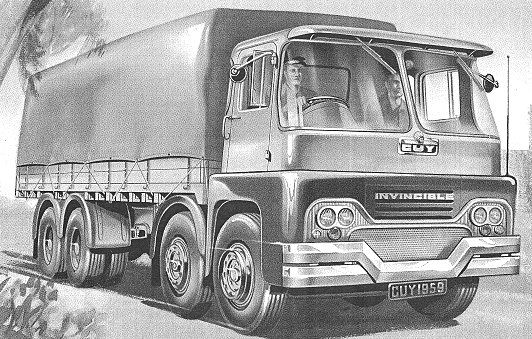
An 'Invincible II'.
In 1960 the 'Warrior II' was introduced. There were two
versions, the 6-wheeled 'Warrior Light 6' with 3 axles, and the
8-wheeled 'Warrior Light 8' with 4 axles. Guy claimed that the
vehicles had the largest payload for the lightest chassis, in
the weight class, and also the lowest prices. The vehicles soon
became very popular.
| |
|
| Read about the Warrior
II |
 |
|
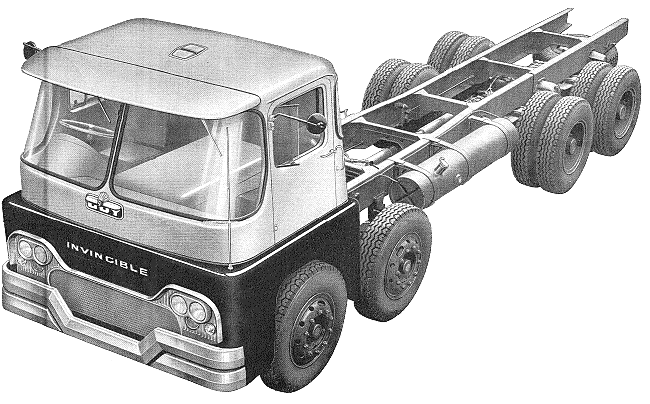
The 'Invincible II' 8-wheel chassis.

A plan of the Guy factory. I would like to thank Sue
and Terry Pinson for their help with it.

The factory in 1948.
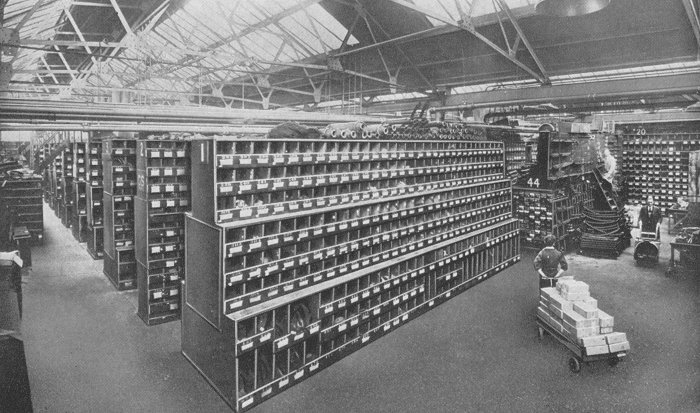
The Spare Parts Stores that had over 45,000 storage
bins.
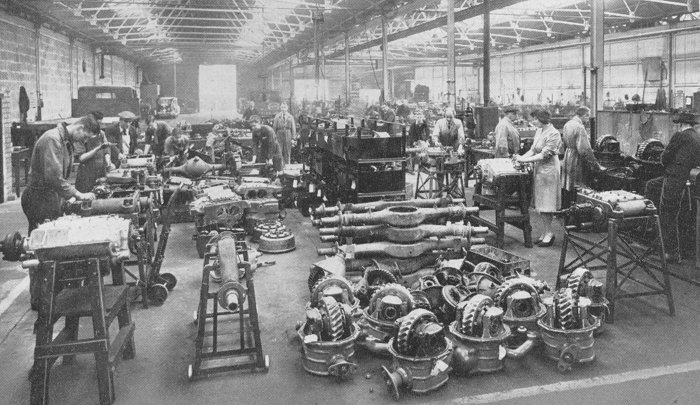
Rear axle and gearbox assembly.

Engine reconditioning.
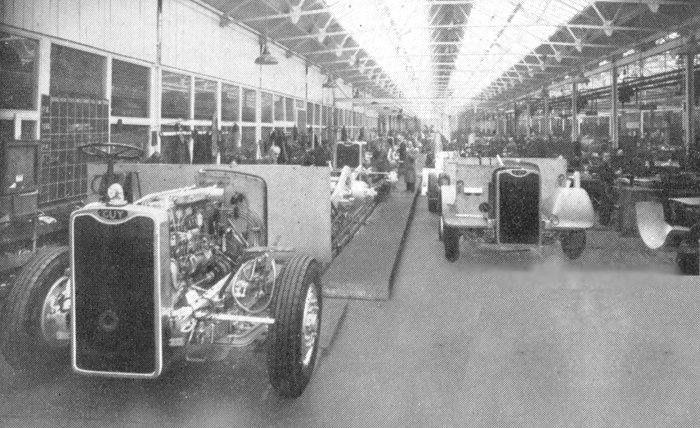
Large vehicle assembly track.
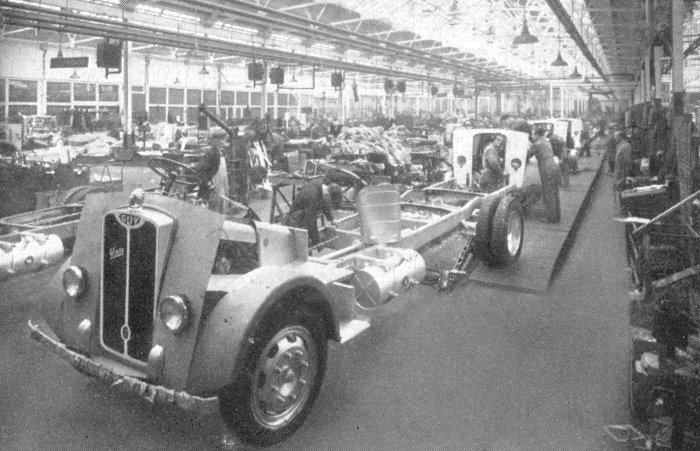
Small vehicle assembly track.

Assembly Shop.
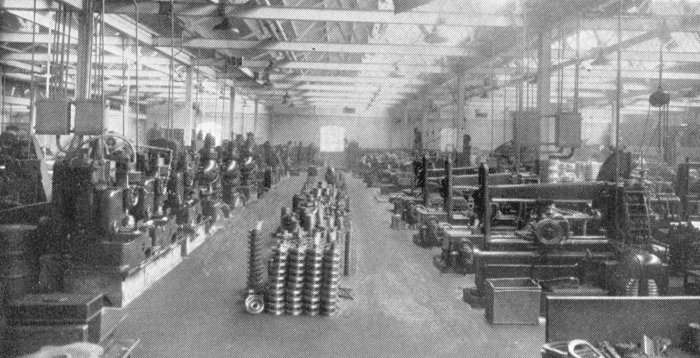
Gear cutting machines.
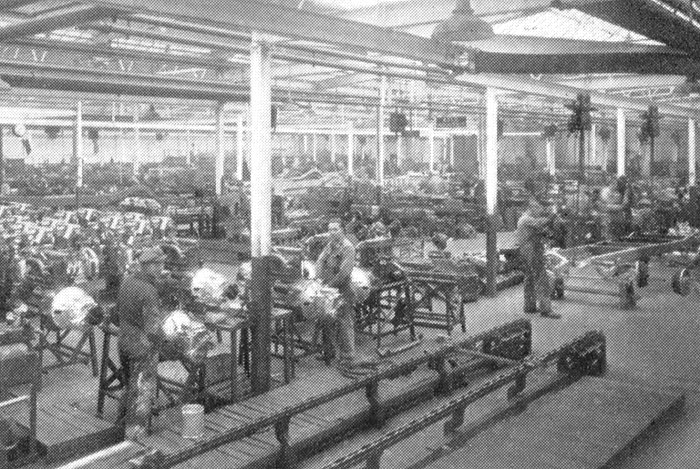
Assembly.
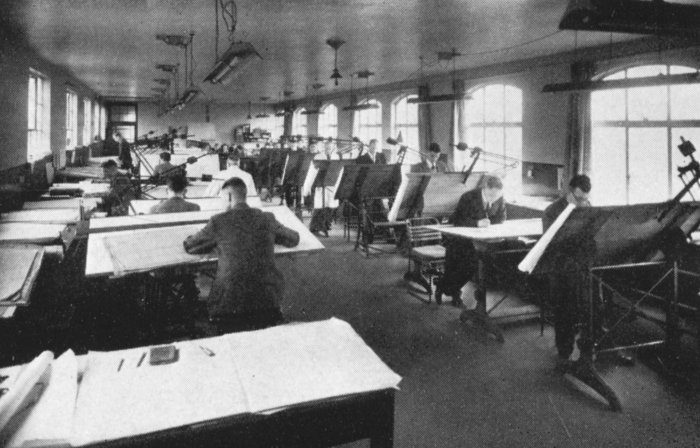
The Drawing Office.
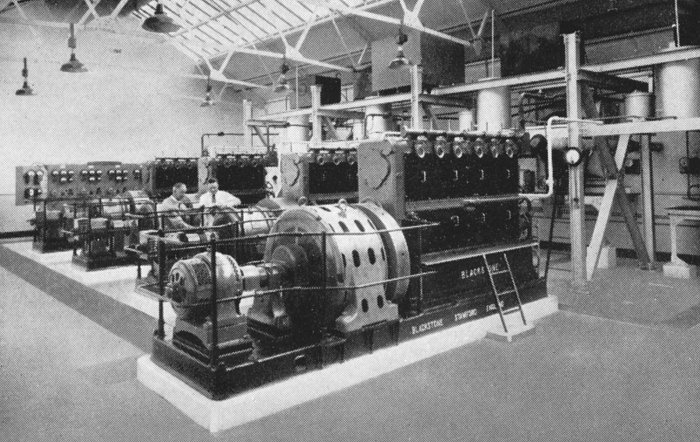
Electricity Generating Station.
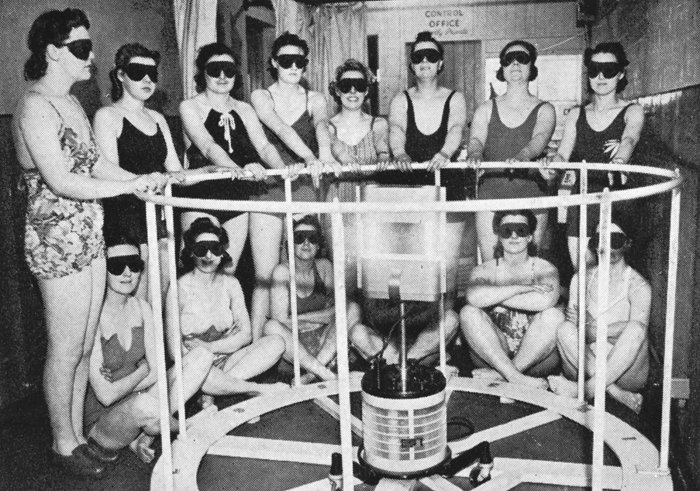
Sun ray treatment in the Works Clinic.
|
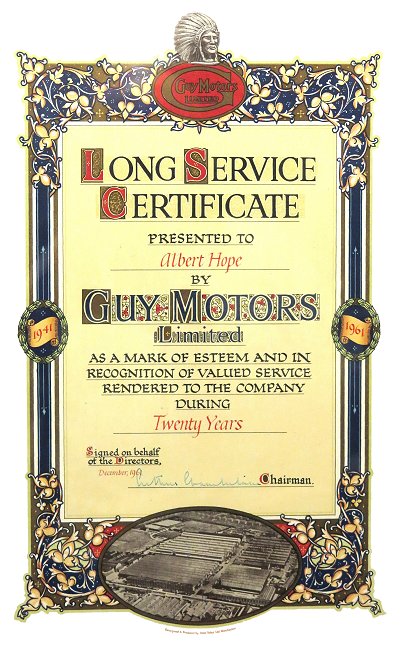
A long service certificate. Courtesy of
Nigel Martin. |
At the time, Guy Motors looked in good
shape, the lorries were selling well, but there were two
serious, and eventually, terminal problems. The company’s latest
bus, the 'Wulfrunian', initially seen as an excellent and
futuristic design, rapidly got a bad reputation because it
included too many advanced and untried features. There were
several problems including brake seal failure, trouble with the
air suspension, disc brake overheating, and some chassis
fractures, which led to escalating warranty costs. All these
could have been rectified, but Guy Motors did not have the
financial resources to do so.
The second problem, which drained the
company financially, was the company’s operation in South
Africa, which was loosing £300,000 a year. This had been Guy’s
first venture into the retail market. Many vehicles were sold on
hire purchase, through finance companies, under a contract by
which Guy was responsible for any losses to the finance company
caused by default of payment. This was a common occurrence which
cost Guy dearly. Guy also offered a generous trade-in allowance
which was far too high. Many old and rotten vehicles, only
suitable for scrap, were traded-in at far too-high a price.
By October 1961 the two serious problems
left Guy Motors in a precarious financial position. There was no
alternative but to call-in a receiver. |
|
At the time, Sir William Lyons, Managing
Director of Jaguar was looking to expand the company, which had
acquired Daimler in June 1960. Lyons, being an astute
businessman realised that Guy Motors could be acquired
relatively cheaply. He purchased it at the bargain price of
£800,000. Guy Motors liabilities were disposed of in a clever
way. One week after the takeover, the assets were transferred to
a new company, Guy Motors (Europe) Limited. The liabilities
remained with the now defunct Guy Motors Limited. On the Friday
before the formation of the new company, all of Guy’s employees
were told that they were sacked, and would be re-employed by the
new company the following Monday.
Jaguar’s impact was immediately felt at
Park Lane. The Guy directors were informed that although no
money was available, they were expected to get the business out
of its financial mess. Some were made redundant, and the others
were told that they would now have a reduced salary, and loose
their pension rights. The range of vehicles was rationalised,
casualties being the 7 ton 'Otter' and some models in the
'Invincible' range.
In 1964 Jaguar acquired Guy’s next door
neighbour, engine manufacturer Henry Meadows. At this time
Jaguar owned many of the best British companies and looked set
to dominate the market. |
|
In the same year Guy’s final truck the 'Big
J' (Big Jaguar) was introduced as a replacement to the 'Warrior'
and 'Invincible'. The vehicle was designed by ex-Dodge and
Daimler man Cliff Elliott, and made its appearance at the 1964
Motor Show. It had a Motor Panels of Coventry cab, and was
available in 2, 3, and 4-axle designs. A range of different
manufacturers’ engines and gearboxes were available, and the
vehicle gained a good reputation, both for reliability, and a
competitive price.
 |
Read
about the
'Big J' models |
|

Richard Stanier's 'Big J4T' from 1978. |
| At the time Jaguar was going from strength
to strength. Its products sold well, and by 1965 its annual
profit was £1.6 million. On 11th July, 1966 Jaguar merged with
the British Motor Corporation (BMC) to form British Motor
Holdings, a decision which would eventually have disastrous
consequences for Guy Motors. Initially this had little impact on Guy Motors, where
production continued quite normally. Unfortunately British Motor
Holdings struggled to make a profit, often due to poor costing.
|
|

David Cookson's 'Big J4T' from 1973. |
The labour government of the day thought that the troubles
in the British motor industry could be cured by company mergers.
Harold Wilson encouraged the merger of British Motor Holdings
with the Leyland Motor Group. As early as February 1967 the
Minister of Technology, Tony Benn, informed the House of Commons
that the two companies were holding talks about a merger.
This became a reality on 14th May, 1968 when the companies
formerly merged to become the British Leyland Motor Corporation
Limited. |
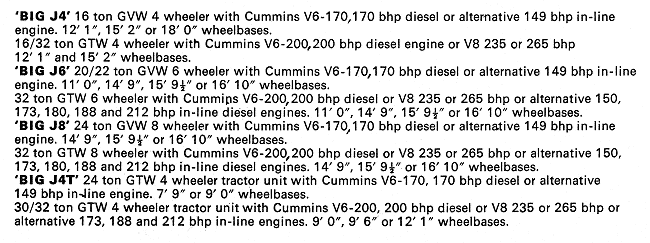
The 'Big Js' on display at the 1966 Commercial Motor
Show at Earls Court.
| The 'Big J' continued to sell well, around 16,000 chassis
were produced in all, at the factory, which for a while kept the
factory open. Leyland had intended to close Guy Motors in the
mid 1970s, but it remained open because of the demand for the
'Big J'.
In 1975 the Leyland 'Landtrain' T43 was introduced, and many
were built at the Guy factory, along with some Leyland
'Marathon' trucks, and a few 'Crusaders'. |
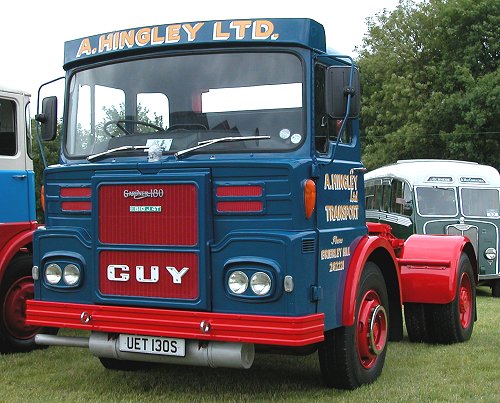
A 'Big J4T' seen in 2004 at the Black
Country Living Museum. |

An article that appeared in the Express & Star on
the 20th August, 1975. It reflects the seriousness of Guy Motor's position, and Leyland's determination to see it go. |
By the late 1970s Leyland was finding it
hard to compete with the growing competition from abroad. A
rationalisation programme began, during which many of the
group’s factories were closed. In 1981 the decision was taken to
close Guy Motors because the factory lacked the facilities that
modern truck production required.
Guy Motors was however, one of the few
companies in the Leyland group that actually made a profit. Its
order books were full for at least 18 months ahead, and its
workforce was second to none. Sadly this not taken into
consideration, and the factory closed in August 1982 with a loss
of 740 jobs.
Guy vehicles were well known throughout the
world. The company exported to 76 countries, and was well
respected for the quality and reliability of its products.
If Guy hadn’t opened the South African
subsidiary, it could all have ended very differently. Money
would have been available to sort out the teething troubles with
the 'Wulfrunian', and further developments would have ensured a
continuing range of up-to-date designs. |
| The final nail was knocked into the coffin on Tuesday 5th
October,1982 at an auction held in the works, during which the
entire contents of the factory were sold off. The 1047 lots
included everything, from hand tools, drill bits, and lathe
tools, to benches, cranes and hoists, forklift trucks, heavy
plant, the contents of the offices, and kitchen equipment.
During the 10 days following the auction, the factory opened
on week days from 8-30 a.m. until 4.30 p.m. so that successful
bidders could remove their purchases from the site.
This must have been a terrible sight for the hundreds of
loyal Guy workers who had only recently lost their jobs. |
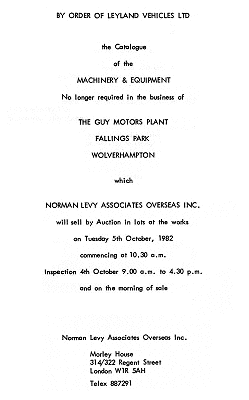 |
| The following obituary appeared in the Express &
Star on the 27th August, 1996.
Motor Giant Dies, 67
A former Wolverhampton motor
manufacturer who won acclaim throughout the world has
died from cancer, aged 67.
Trevor Guy died at home in Whiston,
near Albrighton, yesterday. His family was at his
bedside. His wife Shirley paid tribute today to a
"generous and gentle man". Mr. Guy was the younger son
of Sydney Guy who founded Guy Motors in Fallings Park in
1914.
The company won fame for producing
commercial vehicles and buses. It also made around 150
V8 luxury cars and a few small four-cylinder models.
Trevor Guy became a director of the firm and served on
its board until it was sold to Jaguar in 1961.
Educated at Rugby School, he became
an engineering student with the family firm. He served
for 18 months in Germany with the 10th Royal Hussars and
later travelled the world as a sales executive. After
the company was taken over, Mr Guy turned to farming at
Whiston before retirement. He was diagnosed with cancer
in 1991.
His widow Shirley said: "He loved
the country and country pursuits, and was also an
exceptional sportsman. Above all, he was a man of
integrity and was extremely popular and respected."
Mr. Guy leaves a son Ashley and
daughter Amanda. The family is to hold a small, private
funeral next week. |
|
|
Courtesy of Sue and
Terry Pinson. |
|

Mike Hitchens' 'Big J4T'. |
Many people fondly remember the company and its products,
which were once a familiar sight throughout the country.
Luckily some of the vehicles still survive, and are owned by
enthusiasts who keep them in first class condition.
They are often seen at vehicle rallies, where they keep the
Guy name alive.
Hopefully this will continue for many years to come. |
 |
|
 |
|
 |
Return to
The Post War Years |
|
Return
to the
beginning |
|
Proceed to
Industrial Relations |
|